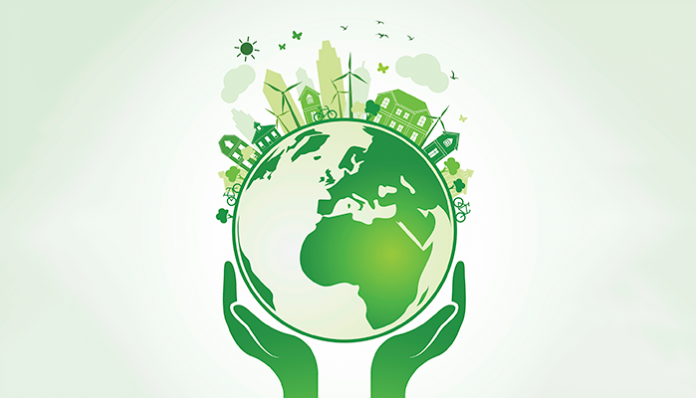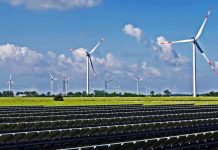This article is written by Kushang, a student from Himachal Pradesh National Law University (HPNLU). This article talks about the renewable energy policies of the country. The article also mentions the issues faced by the sector and gives recommendations for better implementation in the renewable energy sector.
Table of Contents
Introduction
“A transition to clean energy is about investing in our future” and the way to achieve this is through renewable energy. Renewable energy refers to the energy generated from renewable sources like sun, wind, and water. They are relatively clean and help in reducing pollution in the environment. Other sources of energy are major contributors to pollution in the environment. The countries have understood the need for shifting to renewable energy as non-renewable sources are not going to last for a long time. There can be no better alternative than renewable sources for generating energy. India has started focussing on its renewable sources and is among the top producers of this renewable energy in the world. They have implemented various legislation as well as policies to promote renewable sources of energy. The steps are being taken on the international front as well. India and France were the major force behind the formation of the International Solar Alliance (ISA) which aims to promote solar energy throughout the world. The world is working towards new, clean, and renewable sources of energy for a better future.
Renewable energy in India
India has started focussing on its renewable sources of energy. Hydropower is one of them. It refers to the generation of electricity by using the force of flowing and falling water. India has 12 primary hydroelectric plants spread across various states like Bihar, Punjab, Karnataka, Uttar Pradesh, Uttarakhand, Sikkim, Gujarat, Uttarakhand, and Andhra Pradesh. The potential of small hydropower in the country is about 1500 MW.
Wind energy is considered to be one of the cleanest and environmentally friendly sources of energy and is also produced in India. The 5th largest wind power plant in the world is installed in India with a capacity of 3595 MW. The country has a wind energy potential of about 45000 MW.
Solar energy has great potential in India. Most of the parts of the country experience sunny days. The estimated potential of India in solar energy is about 20,000 MW. India is a world leader in biomass energy. It has a potential of about 19,500 MW and is the largest source of renewable energy in India’s primary energy supply. Thus, India has a great potential in renewable energy sources.
The country has started working towards expanding its renewable energy. In 2019, India was ranked as the 4th most attractive renewable energy market in the world. The government set the target to achieve 175 GW of installed renewable electricity capacity by 2022. This was further increased to 227 GW capacity by 2022 and 275 GW by 2027. India aims to achieve 450 GW of renewable electricity capacity.
Key institutions in India for the energy sector
Ministry of New and Renewable Energy (MNRE)
The ministry is responsible for the development of the policies for renewables in electricity, transport, and heat in India. The National Institute of Solar Energy and The National Institute of Energy comes under the Ministry of New and Renewable Energy. The MNRE also covers bioenergy for electricity. MNRE also provides financial support to those involved in the renewable energy sector. The Indian Renewable Energy Development Agency (IREDA) comes under MNRE which works as a non-banking financial institution for providing loans for renewable energy projects.
Solar Energy Corporation of India (SECI)
SECI is responsible for implementing various schemes of MNRE like the solar park scheme and grid-connected solar rooftop scheme.
Ministry of Power (MOP)
This ministry governs and regulates the electricity sector in the country. This includes using renewables for electricity. The Central Electricity Authority (CEA) is the main advisor of MoP. The MoP is also responsible for various important schemes like the UDAY program which aims to help the Discoms and provide them with financial assistance.
Central Electricity Regulatory Commission (CERC)
The commission regulates the tariff for generation companies and transmission utilities. They also grant licenses for interstate transmission and trading.
Ministry of Petroleum and Natural Gas (MoPNG)
This ministry is responsible for the development of biofuels and the implementation of national policies on biofuels. Thus, these are a few key institutions related to the energy sector in India.
Policies and regulations
The government has developed various policies to develop renewable energy sources in the country. These policies are largely financial, fiscal incentives or special directives aimed to encourage renewable energy. The policies are constantly working towards achieving the target set for 2022. The policy measures are administered through the Ministry of New and Renewable sources of energy (MNRE). Some of the policies and fiscal measures in India for renewable energy are discussed below-
Foreign investment policy
- The policy promotes foreign investors in entering a joint venture with Indian companies for financial or technical collaboration and for setting up Renewable energy-based power generation projects.
- The government promotes foreign investors to set up Renewable energy-based projects on Build, own, and operate basis.
- The RBI has permitted the Indian companies to accept investment without obtaining prior approval from RBI to set up renewable-based projects.
- Foreign Investment Implementation Authority (FIIA) has been established to translate Foreign Direct Investment (FDI) approvals and implementations. This will promote foreign investment in renewable energy-based projects.
Industrial policy
- Ministry of New and Renewable Energy (MNRE) lays policy for promoting small, mini, medium, and micro-enterprises involved in the manufacturing and servicing of various types of renewable systems and devices.
- No clearance is required from the Central Electricity Authority (CEA) for power generation projects up to Rs 1,000 million.
- The government also allows financial relaxations to renewable energy-based projects in the form of a 5 years tax holiday. Soft loans are available for renewable energy manufacturing enterprises.
- Custom duty concession is given for renewable energy equipment and spares.
- Private sector companies can set up enterprises to operate as a licensee or generating companies.
- MNRE and Indian Renewable Energy Development Authority have laid down various financial and fiscal incentives for Small Scale Industries. A small scale industry refers to those industries in which investment in fixed assets in plant and machinery does not exceed Rs. 10 million.
Joint venture policies
The government allows foreign investors in joint ventures not only in manufacturing renewable energy products and equipment but also in setting up renewable energy-based projects in the country. These joint ventures help foreign enterprises to enter the Indian market and Indian enterprises also benefit from the new techniques and methods of foreign companies.
Other important policies
- The government realized the need for research and development activities in the field of renewable energy. The government established a Commission for Additional Sources of Energy (CASE) in 1981. CASE seeks to promote the research and development activity in the field of renewable energy.
- The Ministry of New and Renewable Energy was set up later. India became the first country to have an exclusive ministry for renewable energy development.
- The Cabinet Committee on Economic Affairs (CCEA) approved financial support up to USD 6.5 billion by 2022 to promote the use of solar energy among farmers.
- The Atal Jyoti Yojana (AJAY) phase II program was initiated in 2018 to provide financial support in the installation of over 3 million solar street lights in selected areas.
- The MNRE introduced National Wind-Solar Hybrid Policy in 2018 to promote large-grid-connected wind-solar PV hybrid systems for the optimal and efficient utilisations of land and transmission infrastructure.
- The government introduces the Safeguard Duty (SGD) on solar panels to promote the domestic production of solar cells.
- The legal provisions relating to renewable energy is mentioned in Section 86(1) of the Electricity Act, 2003. The section imposes a duty on state commissions to promote the generation of electricity from renewable sources of energy.
Thus, these were a few key policies adopted by the government in India seeking to promote, research, and develop the renewable energy sector in the sector.
Key issues and challenges
There are a few issues and challenges related to renewable energy and the policies adopted in the country. These issues act as a hindrance to the development of renewable energy. Some of these issues are-
- Most of the power plants in India were set up a long time ago. They have become old and inefficient. This has led to a low growth rate in electricity generation during recent years.
- Trade duties on imported solar modules have proven to be counterproductive and disruptive. The government had imposed a 2-year trade import duty in 2018 to protect the domestic solar manufacturing industry. The duty has neither reduced imports nor significantly improved the competitiveness of Indian manufactured solar cells. This has led to slowed down solar installs.
- The central and state governments have not coordinated well in matters relating to renewable energy. This has led to confusion, delays, and mismanagement in auctions, transmission connectivity, and land acquisition-related issues between the central and state projects relating to renewable energy.
- Payment delay from debt-ridden state-owned distribution companies is also a big concern.
- Aggressive tariff caps in auction and retrospective re-negotiations represent a common problem across India. There is a concern related to sovereign risk for foreign investors.
- There is a slow expansion of transmission networks and balancing capacity in the country.
- There exist financial constraints for smaller renewable energy generators.
- India’s stranded or non-performing assets in the thermal power sector are hindering the finances for renewable energy sources.
Recommendations
The issues and challenges can be solved if proper steps are taken. The government should decide to work and focus on renewable energy-related matters. This would help in preventing any further delay in implementing the policies and projects. Some of the steps that can be taken are-
- A holistic strategy is needed on renewable energy, consisting of both supply and use as well as proper transport to fully utilize the untapped renewable resources of the country.
- The government should work towards mitigating the project-related risks.
- Tariff caps have created problems for renewable energy policy. Thus, there is a need to adjust the price caps to ensure the commercial viability of high-quality projects. This should be done by analyzing the industries’ tariff expectations and risk assessments.
- The government should work towards maximizing the country’s bioenergy potential.
- There is a need for better coordination between central and state governments and between distribution companies and developers to ensure the efficiency of the policies adopted for tapping the potential renewable energy.
- The solar manufacturing sector has great potential in the country. The government can play a vital role in its expansion by providing facilities like better solar tariffs caps, and by encouraging exports.
- The GST on solar and wind power equipment should be rationalized at one standard rate.
- Diversify and encourage new third parties for renewable energy procurements through corporate PPAs (Power Purchase Agreements) rolling out state-specific solar and wind tenders.
- A new discoms (distribution companies) scheme is needed to provide performance-based support for these companies.
- There is a need to privatize the power distribution sector due to the inefficiency issues in the present scenario.
- The government should work towards transmission network expansion and modernization and include the connection needs of large renewable energy hubs.
- Domestic and international access to capital should be enhanced for renewable energy companies.
Conclusion
The Indian Government is working towards its target to increase the share of renewable energy in the country. The policies are aimed towards achieving the target by 2022. The MNRE is constantly working towards the implementation of the polices. There are a few issues that need to be solved. However, if proper steps are taken then they can easily be countered. The lack of coordination between state and central authorities have posed a major threat to the promotion of renewable energy. This has to be resolved at the earliest. The government needs to re-look at the tariff rates imposed by foreign investors. There is a need for competition and privatization in the renewable energy sector to ensure efficiency and quality. To sum up, India has done very well until now, but there is still room for improvement. If everything goes well then India will emerge as the global leader in the renewable energy sector.
References
LawSikho has created a telegram group for exchanging legal knowledge, referrals and various opportunities. You can click on this link and join:
 Serato DJ Crack 2025Serato DJ PRO Crack
Serato DJ Crack 2025Serato DJ PRO Crack











 Allow notifications
Allow notifications



